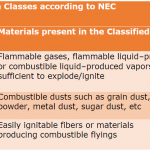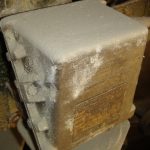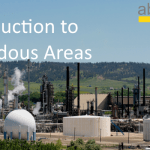What is Area Classification?
Area Classification refers to classifying the hazardous areas of a plant into less hazardous and more hazardous. This classification is done using the IEC system that uses Zones (there are three Zones) or the NEC system that uses Divisions (there are two divisions). Further the areas are also classified on the basis of the materials stored, handled or processed there.
Note: For a detailed understanding of this subject please take the Abhisam Hazardous Area Classification online training course now.

What are Hazardous Areas?
Many industrial work places produce, process, handle and store materials which are potentially explosive and thus hazardous in nature. The risk of fire or explosion while handling these materials is high. Typical examples include offshore and onshore oil & gas production platforms, oil refineries, ships carrying chemical containers, storage terminals at ports, large tank farms, pulp & paper industries, industrial warehouses, gas based power plants and even gasoline filling stations.
These areas are referred to by some people as Ex Zones. This is because under the IEC method of classification we use Zones. The NEC system uses Divisions.
Hazardous Areas Example
But it is not just the chemical, oil and gas or petrochemical industries that have this higher than usual risk. Grain storage silos, processing plants that handle large amounts of powders (including flour milling units and milk powder manufacturing plants), coal mining and handling plants, large oil supertankers, all handle materials that could possibly lead to fires and explosions.
Note that while determining a hazardous area, we also need to know the type of materials present there and thus we also need to understand material classification. Additionally the maximum surface temperature allowed in that area should also be known, this comes under Temperature classification.
For example you may come across a typical hazardous area – Class 1 Division 2 area.
What is a Class 1 Division 2 area?
This means this location has a presence of materials classified under Class I. These are gases or vapors mixed with air that are ignitable (and thus can cause explosions or fires). However, under normal conditions these materials are not present but could be present only under certain abnormal conditions (denoted by Division 2). The Class and Division system is laid out in the National Electrical Code (NEC) and is used primarily in the United States. The rest of the world including other industrial nations use the IEC system that uses Zones instead of divisions.
Note that merely knowing information given above (Class 1, Division 2) is not enough, we must know which group these Class I materials belong to and what is the maximum surface temperature that is allowed in that area.
Groups
In the NEC system every class has a group of gases and vapors that are part of it. Each group consists of several gases. For example there are Gas Group A, Gas Group B, Gas Group C and Gas Group D. The Gas Group A has the most hazardous gases, that require very little energy to ignite (such as Acetylene) and which have a large band between their Lower Explosive Limit and their Upper Explosive Limit. Comparatively Gas Group B has gases such as Hydrogen are less hazardous than Acetylene. An example of a Gas Group C is Ethylene. Propane belongs to Gas Group D.
The IEC system has only three gas groups A, B and C. To make matters confusing in the IEC system the Gas Group C is the most Hazardous (both Acetylene and Hydrogen are clubbed in this group) and Group A is least hazardous (such as Propane).
When you select equipment for use in hazardous areas, be aware of both these standards (NEC and IEC) and select equipment accordingly. The selected equipment has to be suitable for use in that hazardous area, which is certified by third party certifying agencies such as UL or CSA.
Temperature Classification
Additionally we need to know the maximum surface temperatures allowed in that hazardous area because some materials can ignite when they come in contact with hot surfaces. For example Carbon Disulfide (also spelled as Carbon Disulphide, molecular formula CS2) can ignite if it comes into contact with a surface that has a temperature of even 90 degrees Celsius. For example , even an explosion protected motor’s surface could reach this temperature and it could cause CS2 to ignite if it comes into contact with it. Thus we need to select a motor not only suitable for use in a Class 1 Division 2 area but also one that is certified to be safe to use in Group A and has a temperature classification of T6 (maximum surface temperature 85 degrees Celsius).
Feeling that the subject is getting too complex? Sure it is and the best way to reduce the complexity and understand everything in an easy way, is to take Abhisam courses related to Hazardous Areas such as Hazardous Area Classification, Hazardous Area Instrumentation, Intrinsic Safety and Understanding ATEX.
Why undertake area classification?
These areas are prone to risk of fires and explosions due to the nature of the materials handled and hence need a different approach than other “normal” areas. If proper area classification and safety engineering practices are followed while working in these areas, we can greatly reduce the risk of fire and explosion hazards in these places. After the area classification exercise, we can know which areas of the plant or facility have maximum risk, moderate risk and low risk. This enables us to allocate resources properly.
Explosion Proof and Explosion Protected
Many people refer to any explosion protected equipment meant for hazardous areas as being “explosionproof” which is not true. The explosionproof method is just one type of protection method that can be used for hazardous area equipment. There are other methods such as Increased Safety, Nonincendive, Intrinsic safety and others. Learn about all these in detail when you take the premium hazardous area courses from Abhisam




